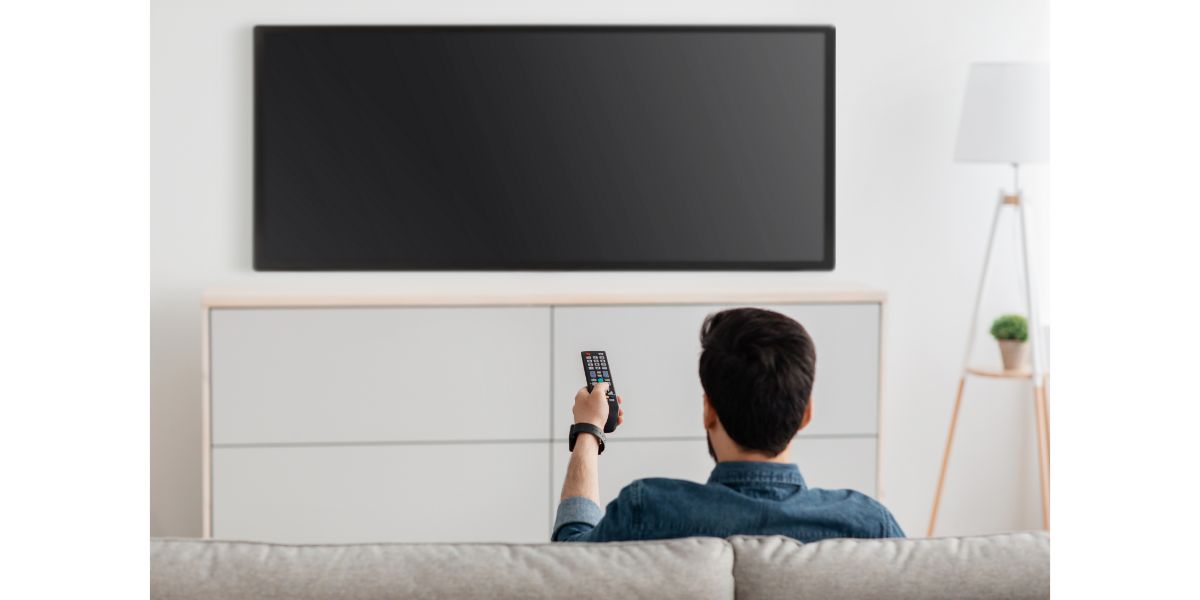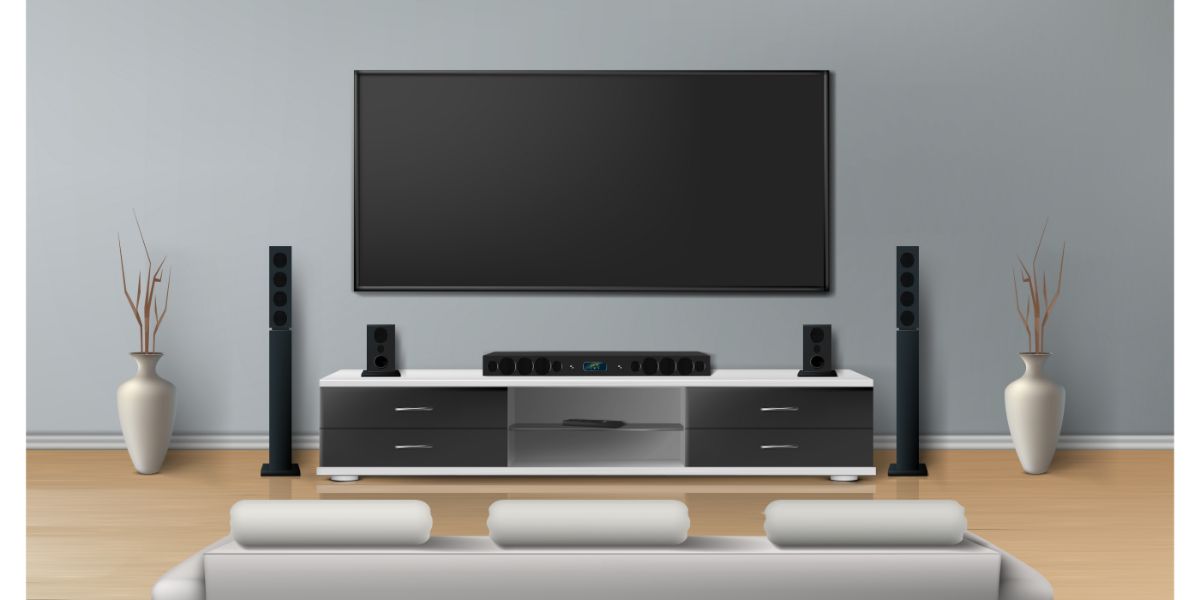Disclaimer: This post may contain affiliate links, meaning we get a small commission if you make a purchase through our links, at no cost to you. For more information, please visit our Disclaimer Page.
Though technology keeps changing, plasma TVs are just as popular today as when brands first released them. These TVs can suffer from some issues, like shutting themselves off for no reason. Learn more about why your plasma TV shuts itself off and the other problems you might encounter.
Table of Contents
Why Does My Plasma TV Turn Off By Itself?
Is there anything worse than your TV turning itself off right in the middle of a big game or when your favorite show is about to end? While you might blame ghosts, the chances are good that something else caused your problem. A plasma TV will often shut itself off when it gets too hot. This is a built-in safety feature that keeps the TV from overheating. You can also check the sleep and timer modes.
Many TV brands include a sleep mode that helps you save on energy. If you watch Netflix for hours without adjusting the volume or any other features, the TV will think that no one is there. Many models will shut down after several hours of inactivity.
This comes in handy when you forget to turn it off before you leave but not if you’re actively using it. The timer mode is a mode that you set, which tells the TV when to shut off. Check your menu because you might find that you accidentally set the timer and didn’t know it.
Now is also a good time to check the power source. Make sure that it is in good condition and fully plugged into the outlet. Your TV might turn itself off because the plug isn’t fully secure or you have a pet that keeps pulling it out. Keep an eye on your remote, too. If anyone in your family accidentally sits on the remote or keeps it pressed between pillows or cushions, they can hit the power button.
How to Fix a TV That Turns Itself Off
There are a few ways you can fix a plasma TV that turns itself off. Start with the power cord. If it fits loosely in the outlet, add a surge protector. The surge protector allows you to get a tighter fit and also keeps the TV safe during power surges. It also comes in handy if you have a pet who keeps stepping on the cord or pulling it out of the outlet.
You then want to make sure the TV has enough ventilation, which may require the use of a fan or that you move it to a different spot away from windows and natural sunlight. When you use your TV, always keep the remote in a safe place. Try placing it on a nearby table or right next to the TV.
Do Plasma TVs Get Worse Over Time?
Any TV you have can worsen over time, including plasma models. Though the top brands claim that you can watch your TV for a thousand hours or more without having any problems, you might find dead pixels on the screen or lines that appear for no reason you can find.
Make sure you look at some of the common and bad signs of a dying plasma TV to see if you need a new one.
CNET tested different models from both Samsung and Panasonic. Their tests found that these TVs developed darker screens over time or that they lost some of their initial brightness. While you can adjust the calibration on your TV, there’s no guarantee that it will ever look as bright as it did originally. Many of these problems only appeared after 1,500 hours of use or more.
Bad Plasma Screen: 8 Common Issues & Bad Signs
TV prices are so low today that you can get a smart 32” TV for as little as $150. That doesn’t mean you should expect your TV to die so often that you must replace it yearly. Check out all of the common issues found with plasma TVs as well as signs that your screen is on its way out.
1. Screen Issues
Many plasma TV owners notice red pixels that appear when they first turn on their TVs. These pixels can also look like small red dots clustered in a certain area or in different spots on the screen.
In most cases, you only notice the dots when the TV is cold such as when you turn it on for the first time that day. As the TV warms up, those dots will go away.
In addition to red dots that come and go, you might see some flashing red dots. They often appear around different parts of the screen. Seeing distorted colors is often a sign that the screen may soon die. You should see the distortion on the screen’s right or left corner. The colors will often look more muted or brighter than they should.
You also want to watch for vertical lines that run from the top to the bottom of the screen. The lines can appear on one side of the screen and slowly make their way across to the opposite side, but you may also see colored lines that appear in the middle of the screen.
While you can keep using your TV, those lines will grow larger and become white, making it impossible for you to see anything. In most cases, it costs more to repair TVs with screen damage than it costs to buy a new one.
2. Burned-In Images
Anyone who is old enough to remember old CRT sets knows about burned-in images. For example, you might recall having an old TV with an image of Super Mario Bros on the screen that never went away. This problem happens when the TV sits on a static image for an extended period.
It often happens more often to TVs in public spaces such as a restaurant or bar that displays its menu on the screen. If you have a habit of falling asleep after pausing a game or while watching Netflix, the image on the pause screen can burn onto the screen.
3. Overheating
The most common reason why your plasma TV shuts itself off is overheating. Some brands sell TVs that come with an internal cooling system that uses fans to circulate air and force out hot air. Not all models come with this feature though. Place your hand near the back of the TV to feel for any warmth.
If it feels hot to the touch or the heat coming off of it, you know it doesn’t have proper ventilation. You can try moving it away from the wall or putting a fan nearby. Limiting the time you spend watching TV can also help because it keeps it from getting too hot.
4. Large Bars/Lines
Large bars/lines are another common problem found with plasma TVs and their screens. These lines are a big sign that you must replace the screen or the entire TV. You want to look for lines that are two inches or three inches thick.
They can appear as vertical lines around the edges of the screen, but horizontal lines are also common. While using the TV, you should start putting money back and shopping for a new model. Those lines can eventually take over the whole screen or cause the screen to turn black.
5. Ghostly Images
While you know that ghosts aren’t turning your TV on and off, don’t be shocked if you see some ghostly images on your screen. In most cases, the images will look exactly like the actors you see but appear almost like a shadow. The images range in color from dull white to deep gray and move across the screen as the actors do.
This lets you know that you have a problem with phosphor emissions. If your TV produces too many emissions for 30 minutes or longer, the ghostly images should appear. Turning off the TV and letting it rest can help.
6. White Spots
Red spots aren’t the only ones you need to worry about because white spots can also indicate a problem with your plasma TV. Many TV owners see small white spots in their screens’ corners.
You might see these spots for weeks or even months, but they will eventually lead to the whole screen going out. White spots are usually the first sign of a faulty panel. Between the cost of buying a new panel and installing it, you can spend much more than the TV costs just to fix it.
Can a Plasma TV Screen Be Fixed?
You can fix a bad plasma TV screen, but you need to find out if it’s worth the cost. Look for TV repair shops in your area. Many of these shops will tell you upfront how much it will cost to fix your TV. You can often buy a new TV for much less than the repair would cost. You usually need expert help to repair a cracked screen or broken components.
Conclusion
A plasma TV can last for a few years or longer. These TVs will often shut off because they get too hot. Making sure your plasma TV has good ventilation and knowing the signs the screen is dying can make it last longer and let you know when it’s time to replace it.


